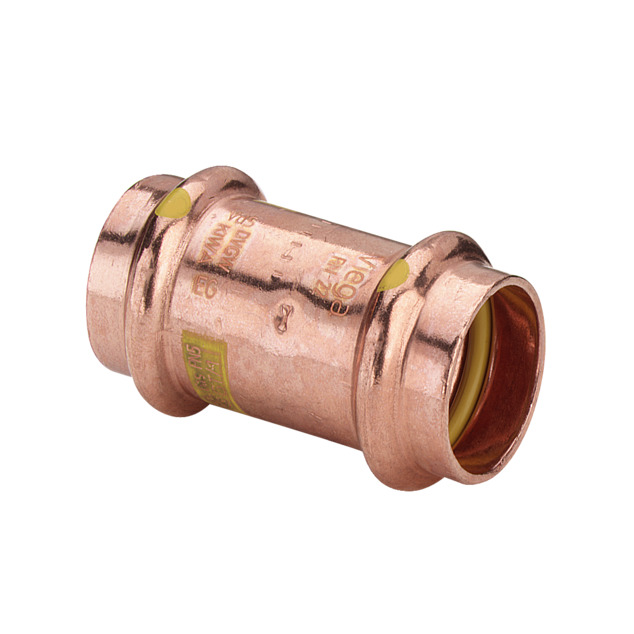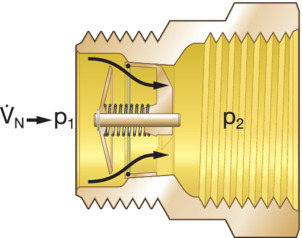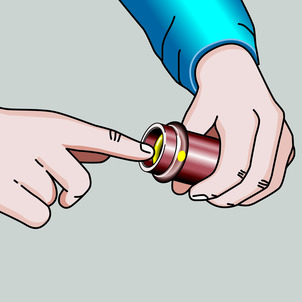Profipress G gas meter corner ball valve with SC-Contur
Product information

Profipress G gas meter corner ball valve with SC‑Contur
for single-pipe gas meters
| Year built (from): | 2008-12-15 |
Trade mark rights exist for this document; for further information, go to viega.com/legal .
Target groups
The information in this instruction manual is directed at the following groups of people:
contract installers registered in the installers' register of a utility company
professional specialist companies for the construction, maintenance and alteration of a natural or liquid gas system
Liquid gas systems may only be constructed, maintained or altered by companies that have the necessary qualification and experience.
Individuals without the abovementioned training or qualification are not permitted to mount, install and, if required, maintain this product. This restriction does not extend to possible operating instructions.
The installation of Viega products must take place in accordance with the general rules of engineering and the Viega instructions for use.
Labelling of notes
Warning and advisory texts are set aside from the remainder of the text and are labelled with the relevant pictographs.

DANGER!
This symbol warns of possible life-threatening injury.

WARNING!
This symbol warns of possible serious injury.

CAUTION!
This symbol warns of possible injury.

NOTICE!
This symbol warns of possible damage to property.

INFO!
This symbol gives additional information and hints.
About this translated version
This instruction for use contains important information about the choice of product or system, assembly and commissioning as well as intended use and, if required, maintenance measures. The information about the products, their properties and application technology are based on the current standards in Europe (e. g. EN) and/or in Germany (e. g. DIN/DVGW).
Some passages in the text may refer to technical codes in Europe/Germany. These should serve as recommendations in the absence of corresponding national regulations. The relevant national laws, standards, regulations, directives and other technical provisions take priority over the German/European directives specified in this manual: The information herein is not binding for other countries and regions; as said above, they should be understood as a recommendation.
Standards and regulations
The following standards and regulations apply to Germany / Europe. National regulations can be found on the relevant web site of your country at viega.com/standards .
Regulations from section: Fields of application
Scope / Notice | Regulations applicable in Germany |
|---|---|
Planning, execution, modification and operation of gas installations | DVGW-TRGI 2008 |
Planning, execution, modification and operation of liquid gas installations | DVFG-TRF 2012 |
Regulations from section: Media
Scope / Notice | Regulations applicable in Germany |
|---|---|
Gas characteristics | DVGW-Arbeitsblatt G 260 |
Regulations from section: Overview
Scope / Notice | Regulations applicable in Germany |
|---|---|
Requirements in gas fittings | DIN EN 331 |
Criteria for leak tightness | DIN 3537‑1 |
Regulations from section: Sealing elements
Scope / Notice | Regulations applicable in Germany |
|---|---|
Scope for the operating temperature | DIN EN 331 |
Regulations from section: Threaded connection
Scope / Notice | Regulations applicable in Germany |
|---|---|
Threaded pair | DIN EN 10226‑1 |
Permitted sealants | DIN 30660 |
Permitted sealants | DIN EN 751‑2 |
Regulations from section: Compatible components
Scope / Notice | Regulations applicable in Germany |
|---|---|
Permitted pipe types | DVGW-Arbeitsblatt G 5614 |
Permitted copper pipes | DVGW-Arbeitsblatt GW 392 |
Permitted copper pipes | DIN EN 1057 |
Permitted stainless steel pipes | DVGW-Arbeitsblatt GW 541 |
Permitted stainless steel pipes | DIN EN 10088 |
Regulations from section: Functionality
Scope / Notice | Regulations applicable in Germany |
|---|---|
Inspection for gas flow monitor | DVGW-VP 305‑1 |
Regulations from section: Technical data
Scope / Notice | Regulations applicable in Germany |
|---|---|
Scope for the operating temperature | DIN EN 331 |
Regulations from section: Corrosion
Scope / Notice | Regulations applicable in Germany |
|---|---|
Corrosion protection | DIN 30672 |
Corrosion protection for external pipes | DVGW-TRGI 2008, Point 5.2.7.1 |
Corrosion protection for internal pipelines | DVGW-TRGI 2008,, Point 5.2.7.2 |
Corrosion protection for external pipes | DVFG-TRF 2012,, Point 7.2.7.1 |
Corrosion protection for internal pipelines | DVFG-TRF 2012,, Point 7.2.7.2 |
Regulations from section: Notes on mounting
Scope / Notice | Regulations applicable in Germany |
|---|---|
Gas installations | DVGW-TRGI 2008 |
Liquid gas installations | DVFG-TRF 2012 |
Application of active and passive protection measures | DVGW-TRGI 2008, Point 5.3.9 |
Use of sealing elements | DIN 3376‑2 |
Regulations from section: Leakage test
Scope / Notice | Regulations applicable in Germany |
|---|---|
Leakage test for gas installations | DVGW-TRGI 2008, Point 5.6 |
Leakage test for liquid gas installations | DVFG-TRF 2012, Point 8 |
Regulations from section: Maintenance
Scope / Notice | Regulations applicable in Germany |
|---|---|
Ensuring and maintaining a safe operating condition | DVGW-TRGI 2008 Appendix 5c |
Intended use

INFO!
Coordinate the use of the model for areas of use and media other than those described with the Viega Service Center.
Areas of use
Use is possible in the following areas among others:
Gas installations
Liquid gas installations
For planning, execution, modification and operation of gas installations, observe the applicable regulations, see Regulations from section: Fields of application .
Media
The model is also suitable for the following media, amongst others:
Gases, see Regulations from section: Media
Liquid gases, only in the gaseous state for domestic and commercial applications, see Regulations from section: Media .
Product description
Overview

INFO!
Viega gas fittings conform with the requirements of the applicable regulations. The gas fittings have been tested and certified by the DVGW in accordance with the following criteria, see Standards and regulations :
Leak tightness
Higher thermal resistance (HTR)
The model is equipped as follows:
casing made of brass
inlet side with R external thread
outlet side with Profipress G press connection with SC‑Contur
test opening < 1 mm
test screw in the dimension G ⅛
gas flow monitor (GFM)
In addition, the model is equipped with a G 2 thread, onto which the gas meter is connected.
The model is lead-sealable and, in addition, can be locked using a commercially available padlock.
The yellow protective sleeve on the actuating lever shows the medium to be gas.
A gas flow monitor (GFM) type K is integrated into this model. A line compensation across the length to be protected is not required when a gas flow monitor type K is installed in metallic pipelines.
You can find more detailed information about the GFM in the technical data about the GFM Technical data .
The model is available in the dimension R 1 x d 28 with the following GFM: Volume flowGas2.5 m3/h / 4.0 m3/h / 6.0 m3/h.
Press connection with SC-Contur

The press connection has a circumferential bead in which the sealing element lies. The connector is deformed upstream and downstream of the bead and permanently connected to the pipe during pressing. The sealing element is not deformed during pressing.

SC‑Contur
Viega press connections are equipped with the SC‑Contur. The SC‑Contur is a safety technology that is certified by the DVGW and ensures that the connection is guaranteed to be leaky in an unpressed state. In this way, unpressed connections are noticed immediately during a leakage test.
Viega guarantees that unpressed connections are visible during a leakage test:
with dry leakage test in the pressure range from 22 hPa–0.3 MPa (22 mbar–3.0 bar)
Sealing elements
The press connection is factory-fitted with a yellow HNBR sealing element.
Use |
|---|
Operating temperature |
Operating pressure |
Gas installation | Liquid gas installation |
|---|---|
-20 °C up to +70 °C | -20 °C up to +70 °C |
≤ 0.5 MPa (5 bar) (MOP 5) ≤ 0.1 MPa (1 bar) (HTR / GT1)2) | ≤ 0.5 MPa (5 bar) (MOP 5)1) ≤ 0.1 MPa (1 bar) (HTR / GT1)2) |
| 1) | The maximum pressure equates to the pick-up pressure of the SSV in the pressure regulating valve. |
| 2) | Operating pressure at HTR requirement is max. 0.1 MPa (1 bar) (GT1). |
In accordance with the valid regulations, the scope of the operating temperature is between -20 °C and+60 °C, see Regulations from section: Sealing elements .
Threaded connection
Prerequisite for a threaded connection, which seals via a thread, is a threaded pair in accordance with applicable regulations, see Regulations from section: Threaded connection . Pursuant to these regulations, a permitted threaded pair comprises a conical external thread and a cylindrical internal thread, e.g. R ¾ and Rp ¾.
Only use commercially available and chloride-free, DVGW approved sealant in accordance with the applicable regulations to seal threads, see Regulations from section: Threaded connection .
Excessive use of sealants can be detrimental to the function of the integrated gas flow monitor.

INFO!
Establish the threaded connection first and the press connection next.
Markings on components
The press connections are marked with a coloured dot. This identifies the SC‑Contur, where the test medium would escape in the case of an inadvertently unpressed connection.
The model is marked as follows:
MOP5 for maximum operating pressure 0.5 MPa (5 bar)
GT1 for maximum operating pressure with HTR requirement 0.1 MPa (1 bar)
flow direction indicator
DVGW writing
HTR marking
yellow dot and yellow rectangle for gas
batch number
GFM specification plate

The protective sleeve on the actuating lever is marked with the following information about the gas flow monitor:
manufacturer
GFM Type
nominal flow
operating pressure range
position indicator
DVGW-G
Compatible components
The model is compatible with the following systems:
Profipress G
Sanpress Inox G
Profipress G gas fittings are equipped with press connections.
The press connections are tested and certified in accordance with applicable regulations with the following types of pipe, see Standards and regulations :
Copper pipes
Stainless steel pipes (material 1.4401)

INFO!
Profipress G gas fittings may only be connected to the Sanpress Inox stainless steel pipe (material 1.4401) up to dimension d 28.
Please contact the Viega Service Center for questions on this subject.
Operating mode
Gas flow monitor (GFM)
A gas flow monitor is an active protective measure in a gas installation. A GFM interrupts the flow of gas if an unintended release of gas occurs.
The GFM is tested in accordance with the applicable directives, see
Standards and regulations
.
Below, the following unit symbols and denominations are used:


The GFM is fully open in normal operation. It is configured for the nominal volume flow.
The operating volume flow is stable. The Δp from p1 and p2 is constant.

In the case of a fault, there is a drop in the pressure in the following pipes so that the flow rate increases sharply. The shut-off flow is reached due to the pressure loss in the range p2. p1 presses against the valve plate and interrupts the flow.

overflowing gas
After the fault has been rectified, pressures p1 and p2 re-balance, by gas flowing from the overflow opening.
Overflow volume = 30 l/h with 100 MPa (100 mbar)

The valve plate opens with help from p2 and the spring force against p1.
The gas flow monitor is back in normal operation.
Technical data
Observe the following operating conditions for the installation of the model:
Use |
|---|
Operating temperature |
Operating pressure |
Gas installation | Liquid gas installation |
|---|---|
-20° C up to +70° C | -20° C up to +70° C |
≤ 0.5 MPa (5 bar) (MOP 5) ≤ 0.1 MPa (1 bar) (HTR / GT1)2) | ≤ 0.5 MPa (5 bar) (MOP5)1) ≤ 0.1 MPa (1 bar) (HTR / GT1)2) |
| 1) | Maximum pressure – equates to the pick-up pressure of the SSV in the pressure regulating valve |
| 2) | Operating pressure at HTR requirement max. 0.1 MPa (1 bar) (GT1) |
In accordance with the applicable regulations, the scope of the operating temperature is between -20 °C and +60 °C, see Standards and regulations .
Integrated gas flow monitor
Installation position |
|---|
Design |
Operating temperature |
Operating pressure |
Pressure loss |
Closing factor fS |
Overflow opening |
horizontal |
I |
-20° C up to +70° C |
15–100 hPa (15–100 mbar) |
≤ 0.5 hPa (0.5 mbar) |
1.45 |
≤ 30 l/h at 100 hPa (100 mbar) |
The shut-off flow is dependent on the gas volume flow of the integrated GFM.
Information for use
Corrosion
Depending on the area of use, corrosion protection measures may have to be taken into account.
One differentiates between external pipelines (underground and overground external pipelines), as well as internal pipelines.
Observe the pertinent guidelines for corrosion protection, see Regulations from section: Corrosion .
Overground pipes and fittings in rooms do not normally require external corrosion protection.
There are exceptions in the following cases:
There is external contact with materials containing chloride.
Stainless steel pipes must not come into contact with building materials or mortar containing chloride.
There is contact with aggressive building materials such as materials containing nitrite or ammonium.
in aggressive surroundings
Handling
Assembly information
Mounting instructions
Checking system components
System components may, in some cases, become damaged through transportation and storage.
Check all parts.
Replace damaged components.
Do not repair damaged components.
Contaminated components may not be installed.
Mounting conditions
Observe the following when mounting:
Observe flow direction indicator.
Observe required space for the gas meters according to the manufacturer's information.
Do not cover or paint the model.
Do not install the model in heat zones (e. g. with hot emissions or strong heat radiation.
Use suitable tools.

NOTICE!
Use sealing element once only
Each time you removed the connection screw fitting, replace the sealing element by a new one; also refer to Regulations from section: Notes on mounting .
Exceptions, selection criteria and the arrangement of the components are described in the applicable regulations, see Standards and regulations .

NOTICE!
Use active and possibly passive protection measures to protect a gas installation from tampering by unauthorised persons.
Generally use active protective measures.
Choose passive protective measures matching the installation, and use them.
The use of active and passive protection measures is specified in the applicable regulations, see Standards and regulations .
Required tools
The following tools are required for production of a press connection:
pipe cutter or a fine-toothed hacksaw
deburrer and coloured pen for marking
press machine with constant pressing force
press jaw or press ring with corresponding adapter jaw, suitable for the pipe diameter and suitable profile

Recommended Viega press machines:
Pressgun 5
Pressgun Picco
Pressgun 4E / 4B
Picco
Type PT3-AH
Type PT3-H / EH
Type 2 (PT2)
Mounting
Shortening the pipes

NOTICE!
Leaky press connections due to pipes being too short!
If two press connectors are to be mounted onto a pipe without an interval, the pipe must not be too short. If the pipe is not inserted up to the prescribed insertion depth in the press connector during pressing, the connection may become leaky.
Therefore, the pipe length must be exactly equal to the total insertion depth of the two press connectors.
For information about tools, also see Required tools .

-
Cut the pipe properly using a pipe cutter or fine-toothed hacksaw.
Avoid grooves on the pipe surface.
Pressing the connection

Requirements:
The pipe end is not bent or damaged.
The pipe is deburred.
The correct sealing element is in the press connector.
HNBR = yellow
The sealing element is undamaged.
The complete sealing element is in the bead.

-
Push the press connector onto the pipe as far as it will go.

-
Mark the insertion depth.
-
Place the press jaw onto the press machine and push the retaining bolt in until it clicks into place.
INFO!Observe the press tool instruction manual.

-
Open the press jaw and place at a right-angle onto the connector.
-
Check the insertion depth using the marking.
-
Ensure that the press jaw is placed centrally on the bead of the press connector.

-
Carry out the pressing process.
-
Open and remove the press jaw.
-
Connection is pressed.
Leakage test
The installer must perform a leakage test before commissioning.
This test is carried out on a system that is finished but not yet covered.
Comply with the general rules of engineering and the applicable directives, see Regulations from section: Leakage test .
Document the result.

INFO!
By employing an overflow cap (model G2360), you can also test the continuous gas installation without mounted gas meters.
Maintenance
The gas installation must be given a visual inspection, e. g. by the owner, once a year.
Serviceability and leak tightness must be checked every twelve years by an installation contractor.
To be covered by the warranty and to ensure the safe operation of the gas installations, operate and maintain them as intended. For more detailed information, refer to the applicable regulations, see Regulations from section: Maintenance .
Disposal
Separate the product and packaging materials (e. g. paper, metal, plastic or non-ferrous metals) and dispose of in accordance with valid national legal requirements.